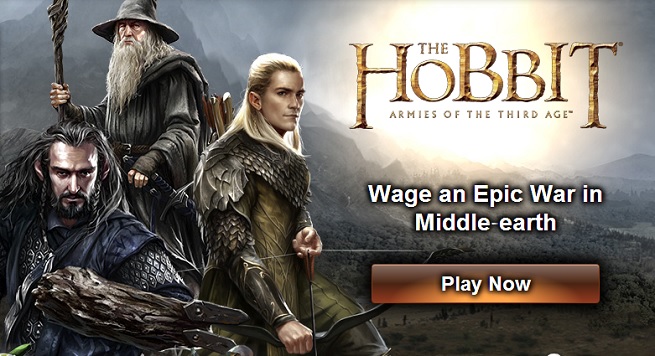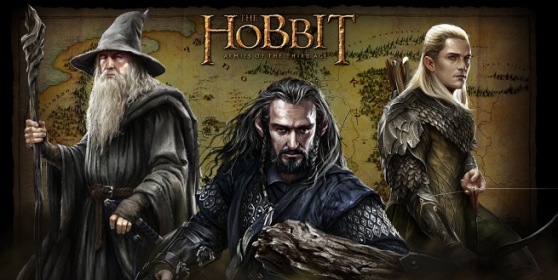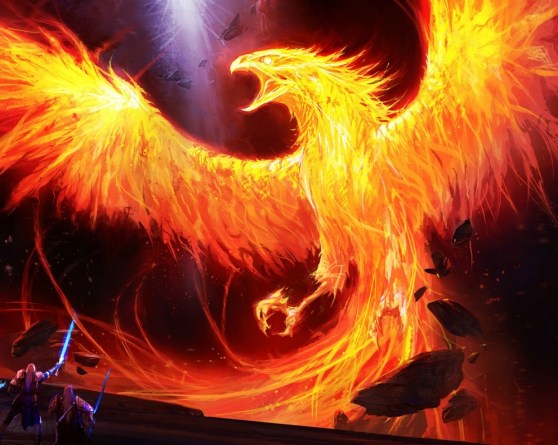GamesBeat: You have this benefit of having loyal users with a large percentage of them who will monetize. The double-edged sword is that some of these whales are very demanding. There are maybe a few incidents that spell this out. I think there was a policy change in Dragons of Atlantis that closed a loophole, basically, and sort of shut down some activity that was not really desirable. But you had a huge protest, to the point where the whales are putting out petitions to Kabam.
And there was another recent virtual goods hack, where some veteran players took advantage and used that. There’s this paranoia in tournaments, where players saw others who were really fast and winning in tournaments, and they were suspecting that Kabam was trying to boost the tournaments so that everyone would spend money to try to beat this unbeatable player. You have these very loyal users who are really annoying as well.
Sheppard: [Laughs] It’s definitely a balance. The passion that people have for the games—we have people in Kingdoms of Camelot web, which we’ve invested in for four years straight, but if you look at the product it doesn’t seem to have changed substantially. In part because the user doesn’t want it to change. There’s this concept that we talk about internally called “don’t move the cheese.” If people are used to the button being in a certain location and you move it for no good reason, they get upset. It changes their pattern of engagement.
Those people, they love the game. They’re in there for social reasons, to compete on whatever vector is important for them. They go through cycles of spending and not spending, loving and hating the game, loving and hating Kabam.
Outside of things that our outside of our control, like policy changes or malicious attacks by outside parties, everything that we do internally is governed by, what’s the right thing for the user in the long term? For us, one of the strategic pillars of the company is franchise durability. We want all of our games to be, ideally, decade-long franchises. That’s a difficult balance when you have not only a large player base, but an incredibly passionate player base, with very different views on how the games should run.
We try to learn from people who’ve done this well in the past. Blizzard always does an exceptional job. CCP, the way that the engage the community and the governance and the roadmap design for Eve Online is exceptional. We’ve had situations where both non-paying and paying users can vote for features to develop in our games. That’s been very effective.
GamesBeat: The distinction versus those companies, though, in free-to-play you have two to 10 percent of the players paying for something. Those are the ones who are doing the complaining. Normally, in game design, you can ignore the extreme minority and design to make it appealing to the vast majority of players. In this case, those are the guys paying you. You can’t ignore this small group that wants to steer you in a certain direction.
Sheppard: Our paying users are classified into different tiers of VIPs. Yes, it is difficult to separate the noise from what’s really important to users. Sometimes we’ll have situations where we’ll have an event—I’ll take an example where we make a mistake. We run an event incorrectly, maybe the payouts aren’t done precisely, and we’ll have a paying user come in and send a ticket to customer support and say, “I’m so mad at Kabam! I’m never going to spend on this game again!” And you’ll literally see on the support ticket that he just made a purchase.
In those situations, we always engage with the customer, especially if it’s a top level VIP. In some situations we’ll even call the users and talk to them about what happened and try to understand. Can we abstract this into a thing that can be fixed? A lot of the team investments we’ve talked about in the past are purposed with getting this kind of operational stability for our users.
Now, with respect to design changes, that’s a much more nuanced engagement method. There’s always a significant percentage of passionate players that are just going to dislike change initially. The overall arc is, if we do make a design change, which we generally avoid in a loop that’s already working, we do wait to see how things stabilize. Both on a metrics basis, so it’ll be all of the standard KPIs that pretty much every conference talks about, but also on a qualitative basis, through customer support tickets, through internal dev chats with users, and also with our chat. We’ll have our game masters give us a sense of how people feel inside the games.
GamesBeat: Do you communicate in advance with players about this, before you roll it out?
Sheppard: If it’s a really big feature, we’ll do a single-server rollout, very similar to the ways a lot of companies do a Canadian beta launch for a game. We’ll usually split test the design there to make sure it’s not game-breaking. Once that’s known good, we’ll roll it out worldwide. Or if it’s a feature that we’ve already deployed in one game and we know that the users love it—let’s say alliance raids, something like that. Then we’ll have a little more confidence and go live with it out of the gate.
Generally speaking, some degree of tension with the user base is good. If your players are not unhappy with changes you’re making, then either you’re not making enough changes, or you’re not making aggressive enough changes to keep them engaged. Dropping back to the TV metaphor, we’ve all had series we watched where we disagree with the way the writers took the storyline, but by virtue of diverting from what we expected, it becomes a form of entertainment unto yourself – something you can debate with your friends. We think that’s okay.
GamesBeat: If you have to do something like sunset a game, you’re probably often faced with the opportunity cost—if I take these 10 or 20 people and put them to work on a potential blockbuster, that payoff may be a lot more than whatever revenue is coming in from an older game.
Sheppard: One of the biggest challenges for us in particular—if we were building games that launched, made money, and then just went to zero, it’s a very different calculus from when you build a game like Kingdoms of Camelot web, and you’re literally running it for four years, with aspirations to run it for 10 years, profitably and with a team on it.
For us the calculus is much more about, what is the level of innovation and investment required to keep that long-term arc on the existing product? We start there because we view franchise durability as the most important foundation of the business. Then, how do we grow the experience and capability of the overall staff at Kabam to always stay linked to where the market is? For anyone that’s working in the space, the pace of change in the space is relentless. Having your best people stay on one title has an opportunity cost to it. It means they’re not being forced to stay contemporary with the market, which means that their skill sets are degrading. Very much like traditional, teams that have worked together have much higher hit rates, especially if they’ve already had a pattern of success, whether it’s in a particular genre or across multiple platforms.
Our general people strategy, and it’s part of why the company has grown so large relative to our competitors, is to always have our best people building forward, launching, and then fortifying games. Then have newer people, to the company or the industry or the platform, backfilling and learning as they go. There’s always enough tension on personal and professional development at all times.
GamesBeat: What’s the future of free-to-play?
Sheppard: I personally believe in the power of free-to-play. As a company, we feel the same way. The parallels in other forms of media, I feel, are very clear, where you see almost all forms of paid media moving to models where large majorities of the population can access the content at some quality level for free. Whether it’s streaming video on the web or listening to the radio on your cell phone, all that content is effectively free.
If you look at music as a parallel for gaming, then the example Dean gave about tournaments being a key driver of engagement in our games—these days, with the emergence of the 360-degree contract, people pay for concerts. They pay for the opportunity to participate in a temporal, special experience with an artist.
What that affords us is the ability as an industry to produce content that’s more mass-market than it’s ever been. I’m sure everyone’s had this experience. You can talk to your grandmother or your extended family, and they’ve probably played Candy Crush. It’s kind of mind-blowing. Three or four years ago, smartphones weren’t at that high a penetration rate.
Then, within that, you have percentage points of people within that ecosystem who are actually paying to support the ecosystem. All the developers are aligning their dev efforts against what that broader audience wants, and very specifically against what that narrow audience wants. It ends up being a space that is actually much harder on content developers, where the rising bar of content quality that we’ve seen in traditional gaming ends up being accelerated, because people have gone through it before and they’re anticipating it. But it’s also much more nuanced. You have to convince people not only to pay in your game, but also to take time away from other games they’re playing today.
I do think it’ll cascade outside of mobile. It’s interesting to me. You’ll see microtransactions introduced to a title that’s asking for $50 or $60 up front. Outside of DLC, what I’ll call macrotransactions, there’s a big resistance to microtransactions in those games. But I’ll tell you, if you start giving away those high-quality games for free–A lot of those people are already playing our games, or Supercell’s games. It’s not like they’re not familiar with the model. It’s just that they’re resistant to paying on both sides. I think you’ll see free-to-play expand outside mobile and web.
Question: For free-to-play, what do you think is the biggest untapped opportunity, something that’s going to be big in the future?
Sheppard: My view might be a bit different than most, but one area I’ve been spending most of my time on in the last year is international. I believe that it’s easy, in North America, to just think about the North American market. Most American game companies organize their business operations, their product development, and their product, to be very geocentric. It’s unintended, but it’s simple to think about it, in contrast, by looking at the games that come out in China. The games coming out of China are monoculture. They’re built for that society. Usually when we see a Three Kingdoms game coming to the U.S., we know it’s not going to be successful.
Starting with just the pitch for our games, all the way through launching the game, scaling it through marketing, and then doing live operations and effectively the sales and marketing inside of the game, we’ve built out a global distribution and sales and marketing organization. It’s given us the ability to not only grow our presence in Europe by double-digit amounts over the last six months, but also push into markets with more confidence and more scale than we would have — markets like Russia and Turkey, which are pure growth markets right now.
I feel like there are very few companies — especially in the core category, which is more operationally complex – that can build that out. It takes a commitment up front, and a belief that this is a global market as opposed to a regional market.
If you think about what the opportunity is behind that, Puzzle & Dragons is just a single-country product, right? Supercell and King are much closer, but they’re largely western products. All of those associated games are massive. They’re meaningful relative to 10-year, 20-year triple-A franchises that everyone knows and loves. So what is the potential for a game that actually does go global in appeal?
There’s a lot of reasons to believe that may not happen, or it may be further off. But that’s a big opportunity. I think someone should build for it. That’s what we’ve been focused on.
VentureBeat's mission is to be a digital town square for technical decision-makers to gain knowledge about transformative enterprise technology and transact. Learn More




